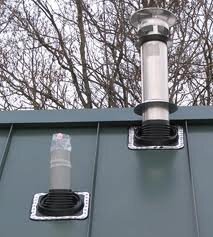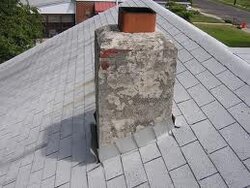Hello all.
I've been lurking this site for a couple of weeks now. I'm 25, owned my home for almost 3.5 years, and have decided to start using my fireplace. As a kid, my parents always burned fires in theirs, and I always enjoyed it. They didn't have any type of insert, but they had blowers that put out lots of heat.
As mentioned, I have a fireplace in my home. I don't think its a prefab, but it was added after my home was built (the brick on the chimney and the fireplace itself do not match the the exterior of the home). My chimney is on the exterior of my home.
I am planning to buy a buck model 20. It's a couple miles up the road from me. Its 12 yrs old, in good condition, and I know the people selling it (they own the tax service that do my taxes). My chimney (roughly 11"x11" inside) has recently been cleaned and inspected by a local chimney sweep.
The stove has has an attachment for a 6" liner (forgive me, I don't know exactly what this is called). I've been looking around on ebay and was thinking about purchasing this: http://cgi.ebay.com/6-x-25-Simpson-...472?pt=LH_DefaultDomain_0&hash=item518dac3230 It's a 6" duraflex, by simpson liner. I have also found the article on this site about making a block off plate, which I intend to do.
This installation seems pretty straight forward. Remove damper (held on by a single bolt), make and insert block off plate, drop liner in chimney, insert buck model 20 into fireplace, attach liner, done. What am I missing? I'm fairly strong and handy, and have a buddy who runs his dad's framing crew that is willing to help for some beer. One problem I will encounter is getting the liner through the opening for the damper, which is slightly less than 6". I've read that I should be able to ovalize the liner at this part, before putting it in.
I have a few questions that I've searched for, but cannot find the answers to. How do I clean my liner? Will I need to remove the insert each time? How much does a 25'x6" liner weigh? I assume I will attach this at the top of the chimney, and it will hang there? Do I really need to insulate it? From what I've found, the codes do not call for this, but I would like to make this as safe as possible.
Is there anything else I'm missing?
Thank you in advance for any helpful feedback!
I've been lurking this site for a couple of weeks now. I'm 25, owned my home for almost 3.5 years, and have decided to start using my fireplace. As a kid, my parents always burned fires in theirs, and I always enjoyed it. They didn't have any type of insert, but they had blowers that put out lots of heat.
As mentioned, I have a fireplace in my home. I don't think its a prefab, but it was added after my home was built (the brick on the chimney and the fireplace itself do not match the the exterior of the home). My chimney is on the exterior of my home.
I am planning to buy a buck model 20. It's a couple miles up the road from me. Its 12 yrs old, in good condition, and I know the people selling it (they own the tax service that do my taxes). My chimney (roughly 11"x11" inside) has recently been cleaned and inspected by a local chimney sweep.
The stove has has an attachment for a 6" liner (forgive me, I don't know exactly what this is called). I've been looking around on ebay and was thinking about purchasing this: http://cgi.ebay.com/6-x-25-Simpson-...472?pt=LH_DefaultDomain_0&hash=item518dac3230 It's a 6" duraflex, by simpson liner. I have also found the article on this site about making a block off plate, which I intend to do.
This installation seems pretty straight forward. Remove damper (held on by a single bolt), make and insert block off plate, drop liner in chimney, insert buck model 20 into fireplace, attach liner, done. What am I missing? I'm fairly strong and handy, and have a buddy who runs his dad's framing crew that is willing to help for some beer. One problem I will encounter is getting the liner through the opening for the damper, which is slightly less than 6". I've read that I should be able to ovalize the liner at this part, before putting it in.
I have a few questions that I've searched for, but cannot find the answers to. How do I clean my liner? Will I need to remove the insert each time? How much does a 25'x6" liner weigh? I assume I will attach this at the top of the chimney, and it will hang there? Do I really need to insulate it? From what I've found, the codes do not call for this, but I would like to make this as safe as possible.
Is there anything else I'm missing?
Thank you in advance for any helpful feedback!


 . That's something I'll keep in mind when searching for one. I'm still checking craigslist daily. I found one tonight that I'm going to call on tomorrow.
. That's something I'll keep in mind when searching for one. I'm still checking craigslist daily. I found one tonight that I'm going to call on tomorrow.
